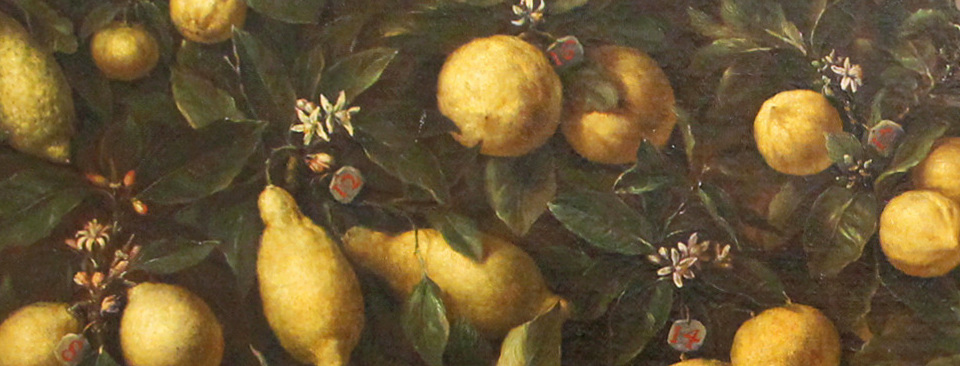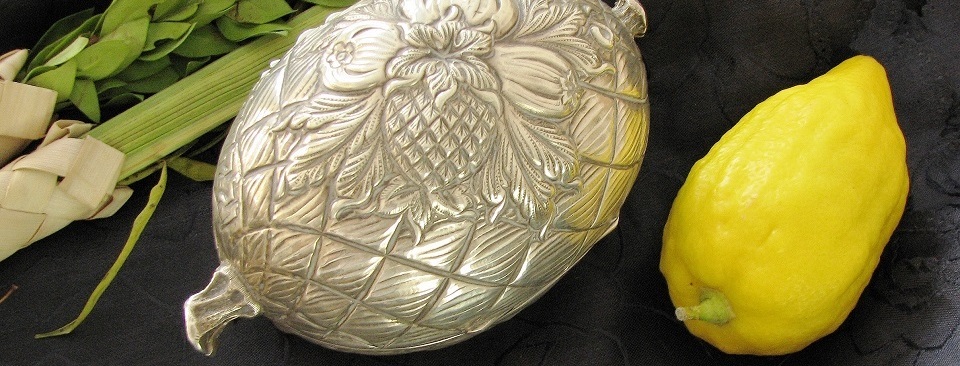The Meaning of Sukkot

The holiday of Sukkot takes place annually on Tishrei 15-21. It is a joyful time where people gather to dine, sing and enjoy being together under the Sukkah: a small, temporary hut outside the house.
As with all the Jewish holidays, Sukkot has deeper meaning that explains developmental processes we go through individually and as a society.
What is the deeper meaning of Sukkot? How does it relate to each person’s individual and social development?
What is the inner meaning behind the Sukkot customs of constructing a Sukkah with a roof of waste, the four species of Sukkot, the seven days of Sukkot, the meaning of its final day of Simchat Torah, and its role in the Tishrei holiday cycle?
Contents
- The Spiritual Meaning of Sukkot
- The Meaning of Sukkot for Society
- The Meaning of Sukkot as Part of the Tishrei Holiday Cycle
- The Meaning of the Structure of the Sukkah
- The Meaning of the Four Species of Sukkot
- The Meaning of the Seven Days of Sukkot
- The Meaning of Simchat Torah
- The Meaning of Sukkot Customs and Concepts According to the Wisdom of Kabbalah
- Further Reading on Sukkot

The holiday of Sukkot represents an essential change of values. By changing our values—from individualistic and egoistic to connective and altruistic—we will be able to create a safe, harmonious and happy world.
Such change requires an assessment of what’s most important in life: self benefit or other people’s benefit?
The holiday of Sukkot (the Tabernacle Feast) and the work in conjunction with it, such as the construction of the Sukkah, explains how we can increase the importance of the very small desire we have to benefit others, until it’s greater in importance than all of our self-aimed desires.
The desire to benefit others is called “waste” because we instinctively perceive caring about others as completely unnecessary. That is, our personal concerns—”What will I eat?” “Who will be my partner?” “What will happen to my family?” “How can I make my money and living?” “How can I earn other people’s respect and appreciation?” “How can I achieve my life’s goals?” “How can I meet all my needs?”—easily bury any thought or concern we have to benefit other people.
The construction of the Sukkah symbolizes raising importance of this “waste”—the desire to benefit others—above all of our desires to personally benefit. Therefore, Sukkot is a holiday celebrating the overcoming of positive human connection above our egoistic, materialistic approaches to life.
Sukkot typically has a lively and happy spirit, with people gathering, dining, singing and having a good time together under the Sukkah.
The wisdom of Kabbalah explains that the time will come when humanity as a whole will enter one great big Sukkah. Obviously, it doesn’t mean a physical structure. It means a major shift in society’s values: love, bestowal and positive connection prevailing over selfishness, exploitation and detachment. At that time, humanity will experience harmony, happiness and perfection through its balance with nature’s quality of love, bestowal and positive connection.
The Meaning of the Holiday of Sukkot
YouTube.

In order to conduct the value shift that Sukkot symbolizes—egoism to altruism—we need social support. Without a social atmosphere that regularly encourages and inspires positive human connection, we instinctively fall into our ego, our self-aimed thoughts, and lose any intention we might have to benefit others.
Holding onto an inclination to connect to others is possible if those in our surrounding environment aspire for such values. Otherwise, we automatically sink into a mode of self-absorption, and cannot exit ourselves.
Therefore, by learning wisdom of how to connect positively, and participating in the creative life of groups that nurture positive human connection, we can experience the influence of the positive force of nature that connects us. The wisdom of Kabbalah calls this force “the light.” The more we’ll experience the heightened state of connection fueled by this force, the more we’ll naturally want to share the experience and the method to achieve it with others. By doing so, we create the conditions for ourselves and for humanity to attain the heightened sensation of positive connection.
That is the meaning of Sukkot for society: with social support, we can attain the state of Sukkot, where we build a roof of importance of our positive connection, and we put our egoism and differences in its shade. In the beginning, we construct this social support in small groups, but the more these small groups experience and share the positive force of connection that they discover, the more this force influences people who even aren’t actively involved in the process, and gradually, a new wave of positivity and connection starts awakening more and more people, until humanity as a whole enters a Sukkah.
In short, the more we work to activate the force of positive connection in society, the faster and more intensively this force enters our lives, sparing us from negative situations and feelings.

In order to gain a more complete understanding of Sukkot, it needs to be viewed as an integral part of the Tishrei holidays’ developmental process:
- During the period of repentance (Selichot)—the month of Elul that leads up to Rosh Hashanah (the New Year)—we reach the conclusion that our egocentric, self-aimed approach to life is driving us towards a dead end.
- When we reach Rosh Hashanah—the beginning (“Rosh”) of the change (“Shana” [year] from the word “Shinui” [change])—we reach the decision that we want to change—by disposing of our egoistic approach to life, and welcoming a new approach guided by love, bestowal and positive connection.
- After making this decision, we arrive at the realization that we’re unable to do anything with ourselves. This state is called “Yom Kippur” (“The Day of Atonement”).
- The self-examination that takes place during Yom Kippur, which reveals to us the true extent of our egoistic and altruistic intentions, brings us to a new discernment: that there is a single solution to our dilemma—to make benefiting others more important than benefiting ourselves individually. We thus proceed to activate our desire to benefit others and disengage with our egoistic desires. This shift in importance—bestowal above reception; altruism above egoism; connection above division—is the essence of Sukkot.
Sukkot is about coming out of our familiar egoistic “homes” and building a new structure where its most important detail, the roof, is constructed with properties of love, bestowal and positive connection.
The Sukkah structure displays the extent to which we can equalize ourselves with the desire to benefit others—the quality of love, bestowal and positive connection—called in Kabbalah “the light,” which “shines” upon the Sukkah’s roof. In other words, the light will shine upon us, i.e. nature’s positive force will connect us, to the extent that we’ll be able to accept it, i.e. to the extent that we create a need to connect to each other. This is the meaning of the holiday of Sukkot.

The Sukkah symbolizes the final, complete form that every person is destined to reach. The laws of its construction symbolically express the way in which we transcend our ego (desire for self-benefit) and acquire the ability to connect above it.
For example, it is written that in the construction of the thatch, the rule must be adhered to that “its roofing is greater than its shade” (Talmud Bavli, Seder Moed). In other words, there should be more shade than light in the Sukkah. This practice symbolizes a spiritual action where we cover our ego, i.e. cease thinking about it, as we feel much greater importance in “the light,” i.e. in implementing our positive connection.
The Sukkah’s roof covering (Heb. “Schach”), is made of what’s called “waste of barn (Heb. “Goren”) and winery (Heb. “Yekev”), i.e. things that grow from the earth, but which have disconnected from it. Palm leaves, bamboo sticks, pine branches and bits of wood are commonly used for this. These all represent items of lesser importance to us. It means that benefiting others initially seems as unimportant to us as the waste. However, the more we spiritually develop, the more we learn how to increase the importance of benefiting and connecting to others, until these values become more important than our inbuilt self-importance. When this importance inverts, we attain contact with nature’s force of love and bestowal, called in Kabbalah “the Creator.”

If we combine all 4 forms of the ego (4 symbols #Sukkot) and direct them toward unity, we will eliminate the ego that divides us.
— Michael Laitman (@laitman) October 6, 2017
In the entrance to the holiday of Sukkot, it is customary to bind and wave the four species, which are four plants that the Torah mentions:
- Etrog (אתרוג) – the fruit of a citron tree.
- Lulav (לולב) – a ripe, green, closed frond from a date palm tree.
- Hadass (הדס) – boughs with leaves from the myrtle tree.
- Aravah (ערבה) – branches with leaves from the willow tree.
“And you shall take on the first day the fruit of splendid trees, branches of palm trees and boughs of leafy trees and willows of the brook, and you shall rejoice before the LORD your God for seven days.”
– Leviticus 23:40
The spiritual meaning of the four species represent feelings we experience in our efforts to positively connect above our inborn egoistic tendency. These feelings are each expressed through the taste and scent of each plant:
- Taste symbolizes emotion.
- Scent symbolizes intellect.
In relation to each of the four species:
- Etrog (אתרוג) – “taste and odor,” i.e. inspiration and wisdom in the path and method of forming positive connections with others.
- Lulav (לולב) – “taste but no odor,” i.e. we have the desire to connect but don’t know how to do it.
- Hadass (הדס) – “odor but no taste,” i.e. we understand what we need to do to connect, but feel no enjoyment in it.
- Aravah (ערבה) – “tasteless and odorless,” i.e. we neither understand nor feel the importance in connecting with others.
The Sukkot custom to bind and wave the four species symbolizes the final stage before entering into a positive connection with each other. We combine all the experience we accumulated, all the ups and downs, scrutinies, insights, discernments and feelings into a single, sharp request to become considerate, loving and caring of others above all our egoistic inclinations and social divisions. Then, it happens: the higher reality of wholeness, perfection and eternity becomes revealed to us. This is called “Simchat Beit Hashoeva” (“the feast of water-drawing”).

“And the LORD spoke unto Moses, saying: Speak unto the children of Israel, saying: On the fifteenth day of this seventh month is the feast of tabernacles for seven days unto the LORD. On the first day shall be a holy convocation; ye shall do no manner of servile work.
Seven days ye shall bring an offering made by fire unto the LORD; on the eighth day shall be a holy convocation unto you; and ye shall bring an offering made by fire unto the LORD; it is a day of solemn assembly; ye shall do no manner of servile work.”
– Leviticus, 23:33 – 23:36
The seven days of Sukkot represent seven ascents up the spiritual ladder of Sefirot, specifically the Sefirot of Hesed, Gevura, Tifferet, Netzach, Hod, Yesod and Malchut. “Higher up the spiritual ladder” means greater connection with each other and with nature’s connective force.
On the eighth day, a special form of connection takes place where a person receives fulfillment by a special force, which is called in Kabbalah “the light of mercy (Hassadim).” It is a force of love, friendship, happiness, compassion and partnership. This action is called an “embrace from the right side,” as it is written, that “His left hand should be under my head, and his right hand should embrace me” (Song of Songs 8:3).
Note: Further such explanations about the holiday of Sukkot with Kabbalistic explanations through the spiritual worlds, Partzufim and Sefirot can be found in the “Further Reading” section. To understand these requires at least a basic understanding in Kabbalah’s basic concepts and fundamental principles. We thus recommend taking one of our introductory courses to become familiarized with its terminology and concepts. Without a foundation in authentic Kabbalah, one will most likely approach these concepts with a distorted interpretation.

Sukkot is followed by the holiday of Simchat Torah (lit. “Joy of the Torah”). Simchat Torah is when we rejoice in the positive connection we are granted, revealed to us by the force of connection, love and bestowal dwelling in nature.
We are joyful that we correctly realized the method of connection, called “Torah,” from the word “Hora’a” (“instruction”), and that we corrected ourselves to harmonize with nature’s properties of love, bestowal and connection.
The reason why this state of Simchat Torah is so joyful is because, since we reach complete balance and harmony with nature’s positive force, we finally find our perfectly integrated place in nature like cells and organs finding their fully functioning roles in a living organism. We thus feel the entire life of this whole that we’re parts of. This is the most sublime state that exists in reality. It’s what Kabbalists discovered over 5,000 years ago, and that they explain how we can attain its full perception and sensation.
The Kabbalistic term for this state is “Gmar Tikkun” (“the end of correction”). The holidays of the month of Tishrei describe the path from the initial decision to change—to become more loving, giving and connected—all the way to the final change we make in our fullest realization of our connection. This is the result on the eighth day, Simchat Torah.
This day is also called Shmini Atzeret, from the Hebrew word for “stop” (“Atzar”), which stands for the place where the correction of egoism-to-altruism stops, at Gmar Tikkun (“the end of correction”).
Building A Sukkah of Peace This Sukkot
YouTube.
 The Meaning of the Seven Days of Sukkot
The Meaning of the Seven Days of Sukkot
Seven days represent seven Sefirot, i.e. seven desires that need to be corrected with an intention to love, bestow and connect: Hesed, Gevura, Tifferet, Netzach, Hod, Yesod and Malchut. The first three Sefirot—Keter, Hochma and Bina—are considered parts of the intention to love, bestow and connect, and thus have no need for correction.
 The Meaning of Ushpizin
The Meaning of Ushpizin
Seven special illuminations that correct the desire and shine during each day of Sukkot: Abraham, Isaac, Jacob, Joseph, Moses, Aaron and David.
 The Meaning of the Sukkah Roof Covering (Schach)
The Meaning of the Sukkah Roof Covering (Schach)
The roof covering (Heb. Schach) is made of “waste of barn (Heb. Goren) and winery (Heb. Yekev),” branches detached from the earth considered as unimportant. The elevation of this waste above our heads by using it to construct the Sukkah’s roof signifies the elevation of the importance of love, bestowal, compassion and positive connection with others above our self-importance.
 The Meaning of the Four Species of Sukkot
The Meaning of the Four Species of Sukkot
The four species exist alongside four parts of our soul, depicted by the name Yud-Hey-Vav-Hey (י-ה-ו-ה), which are four states that a person experiences on the spiritual path:
- Etrog (אתרוג) – taste (i.e. emotion) with odor (i.e. intellect). One both understands and feels the importance in spirituality (i.e. the importance in positive connection with others and nature).
- Lulav (לולב) – taste (i.e. emotion) with no odor (i.e. thoughtless). One feels the importance in spirituality, but doesn’t understand what one needs to do.
- Hadass (הדס) – tasteless (i.e. emotionless) with odor (i.e. intellect). One understands but doesn’t feel the importance in spirituality.
- Aravah (ערבה) – tasteless (i.e. emotionless) and odorless (i.e. thoughtless). One neither understands nor feels any importance in spirituality.
 The Meaning of the Sukkah Measurements
The Meaning of the Sukkah Measurements
A Sukkah over twenty cubits big is disqualified. Our desire is composed of ten parts, called “ten Sefirot.” The twenty cubits against the ten Sefirot are where we feel nature’s (the Creator’s) attitude of love and bestowal towards us, and the ten Sefirot are where we express our love for each other and for our mutual source (nature, the Creator).
 The Meaning of Simchat Torah
The Meaning of Simchat Torah
“Torah” is from the Hebrew word for “instruction” (“Hora’a”). It is written, “I created the evil inclination, I created the Torah, a spice.” The Torah is the light that corrects the desire, i.e. the positive force of nature that connects us above our ego. Simchat Torah represents the final correction of this desire, where we connect boundlessly to each other and to nature. This complete correction is the cause of the joy (“Simcha”).
 The Meaning of Hakafot (Encirclement in the Synagogue During Simchat Torah)
The Meaning of Hakafot (Encirclement in the Synagogue During Simchat Torah)
Hakafot is the encirclement in the synagogue while singing and dancing with the Torah scrolls during the festival of Simchat Torah. While we’re still unripe for receiving the full amount of pleasure that comes from positive connection with others and nature—”unripe” since we’d enjoy that pleasure egoistically, not with an intention that others will enjoy—it is considered a stage where the lights surround us. The custom of Hakafot (encirclement) signifies the surrounding lights that shine on us while our desires are still unripe for the full revelation of our connection.
Further Reading on Sukkot
Posts in Dr. Michael Laitman’s Personal Blog
- Warm Waves Of The Sukkot Holiday
- On The Holiday Of Sukkot
- New Life #629 – Sukkot And Temporariness
- Sukkot: Adhesion With A Single “Embrace”
- Four Species (Arba’at HaMinim) Of Sukkot
- New Life #440 – Holidays: The Sukkah In The Heart
- Let Us Meet In The Sukkah Of Peace
- A Sukkah In The Yard And Also In The Heart
- New Life #441 – The Tishrei Holidays: Searching For The Creator
- To Cover The Earth In The Sukkah Of The Light Of Correction
- More Shade Than Light
- The More Impenetrable The Darkness, The Brighter The Light
- Come Out Of Your Reliable Home And Dwell In A Booth
- The Joy Of Recovering From The Ego
- Holidays From The Perspective Of Kabbalah
- In The Cycle Of The Holidays
- Paradise In The Hut With The Creator
- The Battlefield Is Actually Inside Me
- The Diagnostic And Curative Power Of The Torah
- Don’t Fight The Light
Material on Sukkot by the Bnei Baruch Kabbalah Education & Research Institute
- A Talk at the Dinner of the Holiday of Sukkot, 1995 – by Dr. Michael Laitman
- Sukkot (The Tabernacles Feast) In Spirituality – by Gilad Shadmon
- The Meaning of the Jewish Holidays – chapter from the book, The Path of Kabbalah
- The Spiritual Meaning of the Jewish Holidays – app for Android, iPhone and iPad
The Meaning of the Jewish Holidays Series
- The Meaning of Rosh Hashanah
- The Meaning of Yom Kippur (The Day of Atonement)
- The Meaning of Sukkot
- The Meaning of Simchat Torah
- The Meaning of Hanukkah
- The Meaning of Tu BiShvat
- The Meaning of Purim
- The Meaning of Passover
- The Meaning of Shavuot
